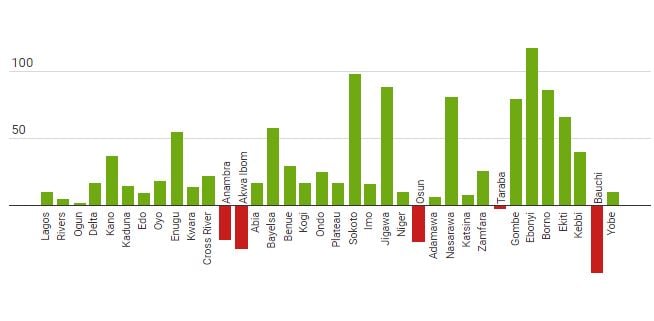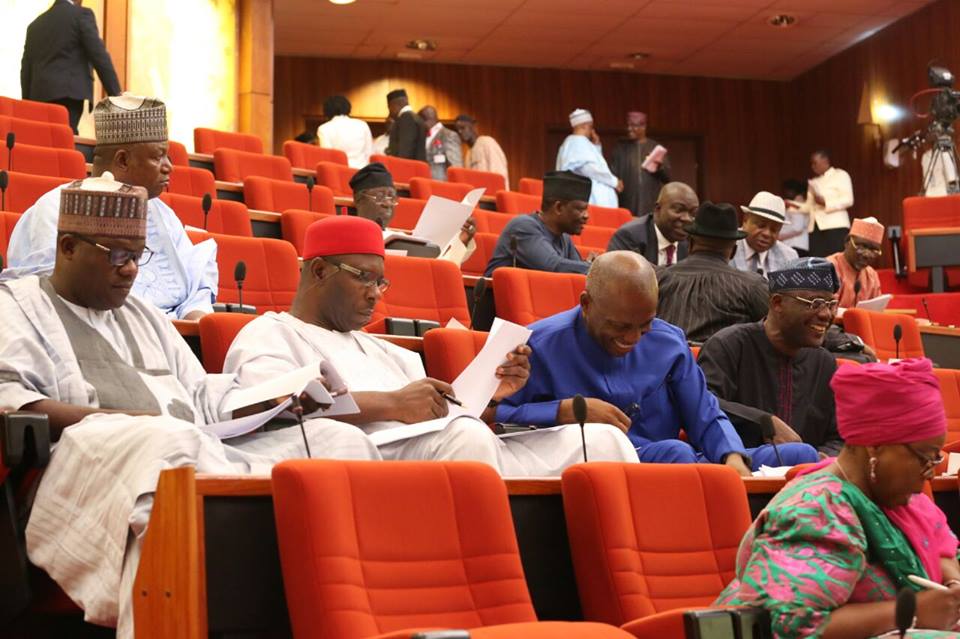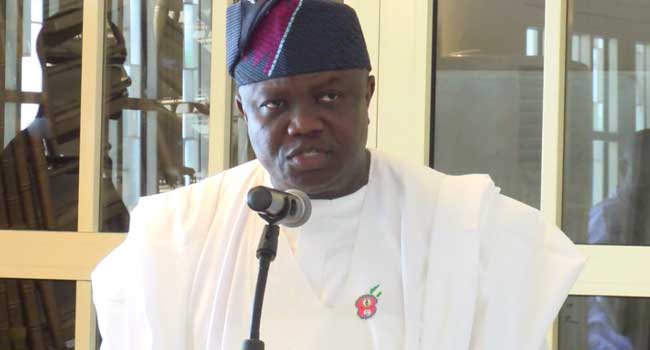Data made available by the National Bureau of Statistics (NBS) shows that revenue from the Federation Accounts Allocation Committee (FAAC) form more than 50 percent of the total income realised by states in 2017.
The only exceptions were Lagos and Ogun where the allocations represented 21 percent and 25 percent respectively.
The data also showed that 31 states increased their internally generated revenue in 2017 while the opposite was the case for five states.
The states which experienced a decline in IGR were Anambra, Akwa Ibom, Osun, Taraba and Bauchi.
Advertisement
States typically generate revenue from taxes and levies paid by residents and companies domiciled in the state.
Revenue can also be generated from payments made for services provided by state ministries, departments and agencies.
“The full year 2017 state IGR figure hits N931.23bn compared to N831.19bn recorded in year 2016. This indicates a growth of 12.03% year on year,” the NBS report read.
Advertisement
In 2017, Lagos recorded N333.96 billion, a 10 percent increase from its 2016 IGR. This made it the state with the highest internally generated revenue.
This figure is higher than the IGR of 29 states put together. In 2017, the Nigeria Extractive Industries Transparency Initiative (NEITI) said the 2016 IGR from Lagos was higher than that of 33 states put together.
Ebonyi recorded the highest year-on-year IGR growth at 117.88 percent.
States like Bayelsa, Sokoto, Enugu, Jigawa, Nasarawa, Gombe, Borno and Ekiti grew their IGR by more than 50 percent.
Advertisement
This means that majority of the states relied on federal allocations to pay workers.
Advertisement
Add a comment







